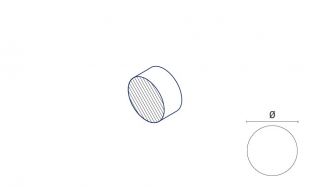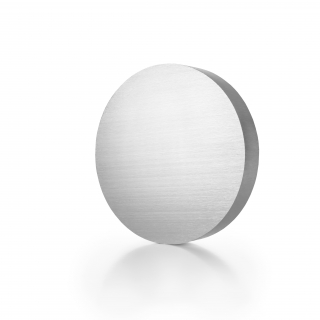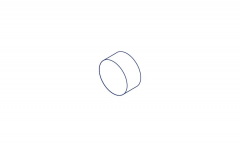FORMODAL®07
circular blank

- Form circular blank
- Material Aluminum
- Material FORMODAL®07
- Material chemically EN 573-3 Al99.5
- DIN 3.0255





| Aviation | No |
| Cu (to) | 0,05 |
| Fe (to) | 0,4 |
| Mg (to) | 0,05 |
| Mn (to) | 0,05 |
| Other | 0,03 |
| Rest | Aluminium |
| Si (to) | 0,25 |
| Ti (to) | 0,05 |
| Zn (to) | 0,07 |
| Anodise - decorative | 2 |
| Anodising - protective anodising | 1 |
| special anodising quality EQ | 1 |
| Normal atmosphere | 2 |
| Seawater atmosphere | 2 |
| suitable according to DIN EN 602 | Yes |
| Bending | 3 |
| Deep drawing (conditional) | 4 |
| Drop forging | 1 |
| Extruding | 1 |
| Impact extrusion | 3 |
| Press | 3 |
| Upsetting (Conditional) | 3 |
| Heating time max. | 2 h |
| Heating time min. | 0.5 h |
| Annealing temperature max. | 350 °C |
| Annealing temperature min. | 320 °C |
| Cooling conditions | uncontrolled |
| dimensional stability | 1 |
| Eroding | 1 |
| soft annealed | 4 |
| Colorcode | Signal black (RAL 9004), Traffic red (RAL 3020) |
| Material chemically EN 573-3 | Al99.5 |
| DIN | 3,0255 |
| France AFNOR | A5 |
| Italy UNI | 9001/2 |
| Norway | 17.010 |
| Spain | L-3051 |
| Sweden | 144.007 |
| United Kingdom BS | 1B |
| Polishing | 2 |
| Painting / Coating | 3 |
| Coefficient of thermal expansion from 20 to 100°C (typical) | 23.5 K⁻¹10⁻⁶ |
| Coefficient of thermal expansion from 20 to 200°C (typical) | 24.4 K⁻¹10⁻⁶ |
| Coefficient of thermal expansion from 20 to 300°C (typical) | 25.4 K⁻¹10⁻⁶ |
| Coefficient of thermal expansion from -50 to 20°C (typical) | 21.7 K⁻¹10⁻⁶ |
| Density (typical) | 2.7 g/cm³ |
| Electrical conductivity max. (typical) | 36 m/Ω*mm² |
| Electrical conductivity min. (typical) | 34 m/Ω*mm² |
| Modulus of elasticity (typical) | 69 GPa |
| Shear modulus (typical) | 25.9 GPa |
| Specific heat (typical) | 900 J/(kg·K) |
| Thermal conductivity max. (typical) | 220 W/m*K |
| Thermal conductivity min. (typical) | 210 W/m*K |
| Brazing | 1 |
| Brazing with flux | 1 |
| Friction soldering | 1 |
| Soft soldering with flux | 1 |
| Gas | 2 |
| MIG | 2 |
| Resistance spot welding | 4 |
| TIG | 2 |
| welding additives |
|
1 very good
2 good
3 moderate
4 poor
5 unsuited
0 Not specified